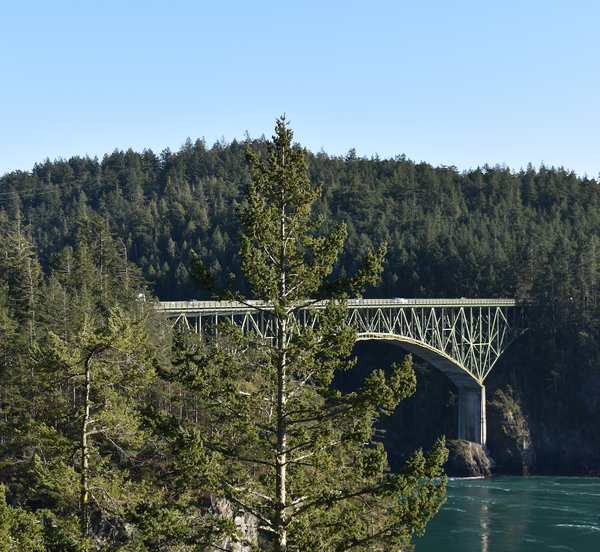Deception Pass Bridge stretches from the southern portion of Fidalgo Island across a turbulent waterway to the northernmost point of Whidbey Island. The area it’s located in is now part of one of the most visited state parks in the Pacific Northwest. Before 1935, the year that the historic bridge was opened to the public, even experienced skippers struggled to make their way through Deception Pass due to its unusual tidal composition. But there was another reason for the location’s unusual monicker beyond its difficulty to navigate through, and that was the bootlegging operations that used to run rampant there during the Prohibition Era. Deception Pass was used a major point of contact between smugglers, also known as “rumrunners”, in order to deliver liquor to big cities further south. Many smugglers traveled through the San Juan Islands before stopping at Deception Pass and then making their way downwards along the West Coast.
Deception Pass consists of high cliffs on both sides. The Deception Pass Bridge was therefore built to rise 180 feet over the surface of the water. An early prototype of the bridges’ dark green arches was created and exhibited at the Alaska-Yukon Exposition in Seattle during 1909. The exposition was designed as an early celebration of growing industrial development in the Pacific Northwest region.
Deception Pass marks the entrance to the San Juan Islands, and the currents there can exceed over nine knots. The occasionally placid appearance of the water’s surface hides something very different underneath. In fact, the currents blasting in from the Strait of Juan de Fuca collide with currents coming in from Puget Sound, resulting in standing waves, riptides, and whirlpools. These phenomena pose safety hazards to boats and ships of varying size. The Deception Pass Bridge was built as a safety measure for many island residents, providing safer access between Whidbey Island and Fidalgo Island across the treacherous waters below.
